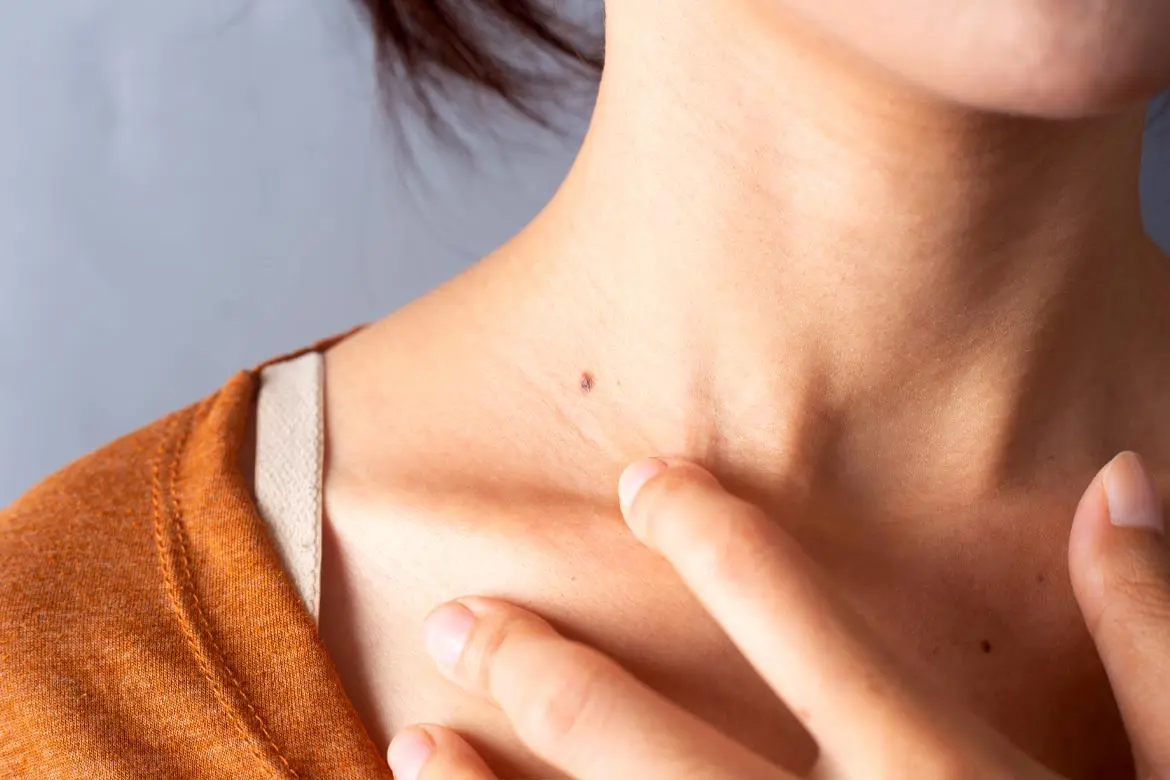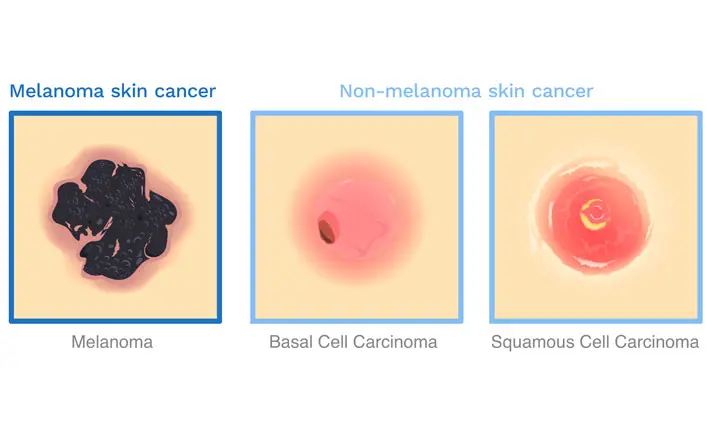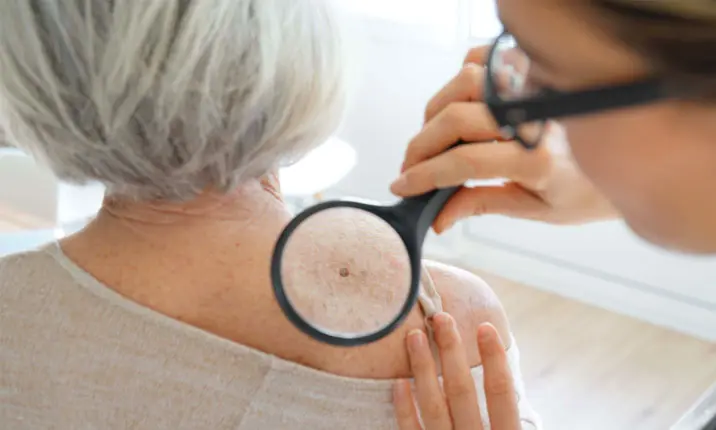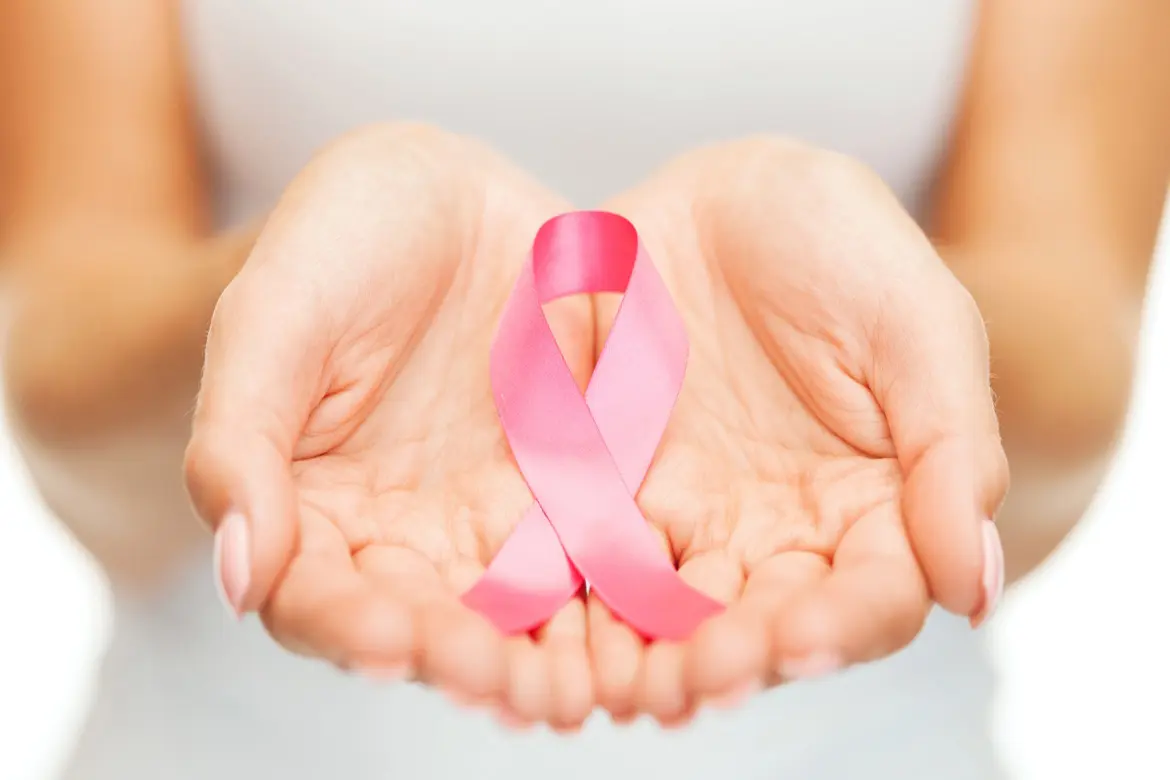Skin cancer begins in the outermost layer of the skin, known as the epidermis. This layer contains three types of cells – squamous cells, basal cells and melanocytes. When the skin is exposed to excessive sunlight, ultraviolet (UV) radiation can trigger changes in these skin cells' DNA, leading to skin cancer.
What are the different types of skin cancer?
The type of skin cancer depends on where it develops. Skin cancer can be broadly categorised as melanoma and non-melanoma.
- Melanoma skin cancer begins in the melanocytes, where melanin is produced. It can develop anywhere on the body, from normal skin or an existing mole that turns cancerous. While it is rare in Singapore, with an incidence of 0.5 cases per 100,000 people, it is more aggressive than non-melanoma skin cancers and more likely to grow and spread than the more common types of skin cancer.
- Non-melanoma skin cancer (NMSC) refers to any other type of skin cancer that does not originate in the melanocytes. The most common types begin in the basal or squamous cells, with basal cell carcinomas accounting for approximately 60% of all skin cancers. NMSC is the 6th most common cancer in men and the 7th most common cancer in women across Singapore.
Rare types of skin cancers
- Merkel cell carcinoma (MCC) begins in Merkel cells, which are neuroendocrine cells found close to the nerve endings in the skin. Though rare, it is aggressive and can form on any part of the skin, and may appear as ulcers or sores. Men are twice as likely to develop MCC, possibly because of higher levels of sun exposure, as are older people and those with weakened immune systems. It is hard to treat if it spreads beyond the skin.
- Lymphoma of the skin starts in white blood cells that are part of the body's immune system, known as lymphocytes. They are broadly categorised as Hodgkin lymphoma and non-Hodgkin lymphoma. While they are more common in men, older people and those with weakened immune systems, there is no clear cause for why lymphoma of the skin develops in some people and not in others.
- Kaposi sarcoma begins when the cells that line the lymph or blood vessels get infected with the Kaposi sarcoma-associated herpesvirus (KSHV). However, not everyone who gets infected will develop Kaposi sarcoma. It is more common among those with weakened immune systems, and can appear in any part of the body, including the skin.
What are the causes and risk factors for skin cancer?
There are several things that increase your risk of developing skin cancer. These include lifestyle factors which can be modified, as well as non-modifiable factors.
Lifestyle risk factors include:
- Overexposure to ultraviolet (UV) radiation. UV radiation such as sunlight increases your risk of skin cancer as it can cause cellular damage to your skin's DNA. Frequent sunburn can also increase your risk, as well as artificial sources of UV rays such as tanning beds and sun lamps.
- Exposure to toxic substances such as pesticides and tar.
- Exposure to ionising radiation in occupations such as radiology personnel.
Non-modifiable factors that can increase the risk of skin cancer include:
- Family history of skin cancer. A person with a family history of skin cancer is more likely to develop the disease.
- Ethnicity. Fair-skinned individuals face a higher risk, but skin cancer can also develop in those who have naturally dark skin. The risk for different types of cancer can further differ among different ethnic groups.
- Moles. Having many moles or irregular-shaped moles may lead to a higher chance of developing skin cancer.
- Actinic keratoses (AKs). These pre-cancerous cutaneous lesions can develop to become squamous cell carcinoma (SCC).
- Immunosuppressive medication. Those who have undergone an organ transplant usually require long-term immunosuppressive regimens, which may increase their risk of skin cancer.
- Photosensitivity. This can be a result of certain conditions or medications, causing your skin to have increased sensitivity to UV radiation.
What does skin cancer look like?
Approximately 99% of skin cancers are curable if diagnosed and treated early. To do so, you need to recognise the signs and symptoms of skin cancer, which can vary depending on the type of cancer. Generally, you should take note of changes in your skin such as a new growth, mole or sore, especially a sore that is itchy, painful, crusty or bleeding and takes a long time to heal.
Here are some common symptoms to look out for:
- Basal cell carcinoma (BCC) most often appears on sun-exposed skin as an open sore, red patch, growth, or pearly or shiny bump. This growth may have raised or rolled edges with or without a central indentation. It may also ooze or bleed, forming a crust or scab.
- Squamous cell carcinoma (SCC) can appear as a scaly red patch or open sore, as rough, thickened skin (like a wart), or as a raised growth with a central depression. These can form on parts of the skin exposed to the sun, though they can also form anywhere that is less exposed to sunlight. A chronic non-healing ulcer is concerning for squamous cell cancer of the skin.
- Melanoma most often appears as dark spots such as moles or brown spots. While most of these are harmless, melanomas have characteristics that are summed up using the ABCDE approach as they are often Asymmetrical, have uneven Borders, different Colours within the same mole, are Dark and larger in Diameter, and Evolve.
- Actinic keratoses (AKs) are not skin cancer, but pre-cancerous growths on the skin that can turn into squamous cell carcinoma. They appear as dry, scaly or crusty patches of skin, usually on the head, neck, hands, and forearms.
Common questions answered
Dr Richard Quek, a medical oncologist who specialises in melanomas, addresses some commonly asked questions about skin cancer.
Can a common mole turn into melanoma?
It is unusual for a common mole to develop into melanoma. However, people with a large number of moles have a higher risk. You should see your doctor if a common mole changes its colour, size, shape, texture, or oozes or bleeds.
Is skin cancer contagious?
Skin cancer is not contagious. Cancer cells from someone with cancer cannot survive in another person's body as the immune system detects and destroys foreign cells, including cancer cells from another person.
Are sunbeds a substitute for sunbathing without the risk of skin cancer?
Exposure to artificial tanning devices such as sunbeds are a known risk factor for skin cancer, and this is a lifestyle factor that can be avoided, regardless of your medical history.
Does skin cancer appear only on the skin?
Sun-exposed areas of the skin, such as the scalp, face, lips, ears, neck, chest, arms and hands, and legs, are more prone to skin cancer development. However, skin cancer can also occur in areas rarely exposed to sunlight, such as the palms, fingernails, toenails, and even the genitals.
How can I reduce the risk of skin cancer?
You can reduce your risk of developing skin cancer by avoiding exposure to lifestyle factors and practising sun safety. These measures include:
- Stay in the shade during the hottest parts of the day.
- Wear clothing that covers your arms, legs and other exposed areas, including the back of your neck.
- Wear a broad-brimmed hat and sunglasses to protect your eyes, face and ears.
- Use broad spectrum sunscreen (that protects against both UVA and UVB rays) with a Sun Protection Factor (SPF) of at least 15, and reapply every hour that you are in the sun.
In addition to these preventive measures, you should also take note of any changes in your skin such as unusual sores, darkened patches and moles. See a skin doctor if you have any questions or concerns about skin cancer. Remember, early detection saves lives.















